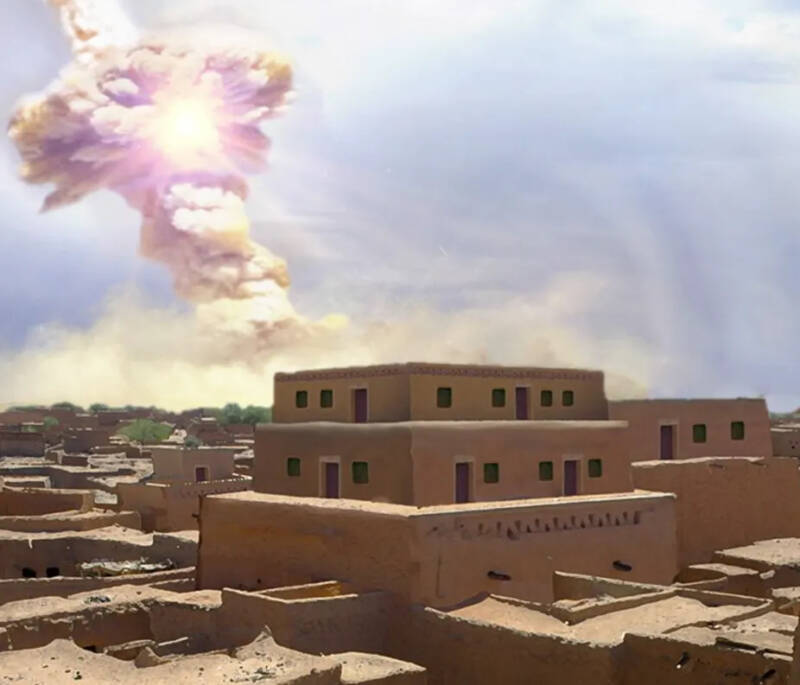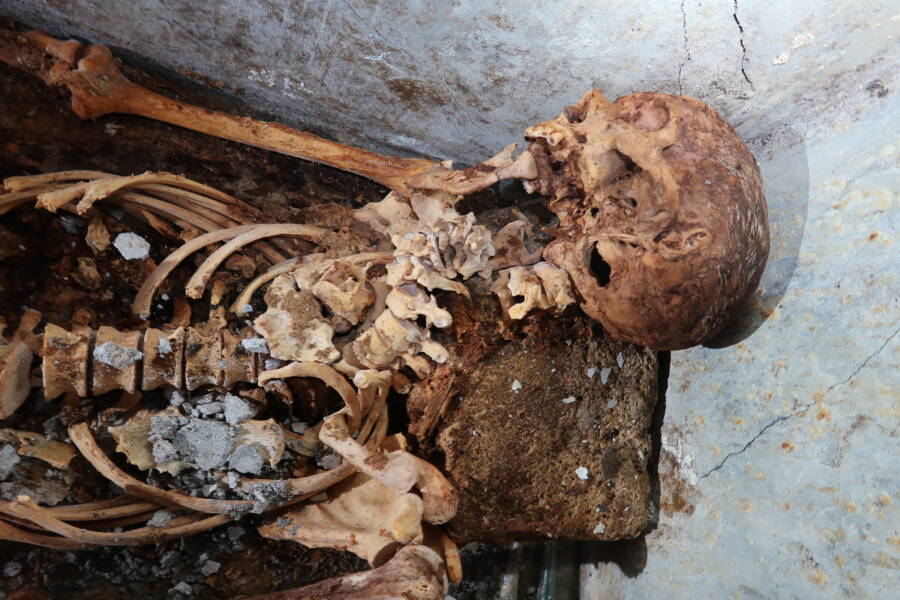Archaeologists Discover Possible Cause Behind One Of The Bible’s Most Harrowing Stories

Scientific ReportsAn illustration of a “cosmic airburst,” which may have destroyed Tall el-Hammam.
In the Bible, God destroys the cities of Sodom and Gomorrah because of their wickedness. This year, archaeologists postulated that a rare meteoric explosion may have struck down the “real-life Sodom.”
They theorized that a cosmic airburst destroyed the city of Tall el-Hammam in modern-day Jordan in 1650 B.C. The airburst, which results from a meteor exploding into a fireball, could have pummeled the city with a force 1,000 times stronger than the atomic bomb that destroyed Hiroshima.
Such an event would have killed Tall el-Hammam’s 8,000 residents as flames consumed the city. Though no one survived, residents of neighboring towns may have witnessed the event. Scholars suspect that they spread the news, which later became the Biblical story of Sodom.
According to James Kennett, the co-author of a study about the cosmic airburst published in Scientific Reports, ample evidence exists to support this theory. He and his team examined molten glass and metal buried at the site, which suggests that the town once suffered an intense blaze.
These materials are so melted that neither a volcano nor an earthquake would have been powerful enough. Rather, only an event like a cosmic airburst could have produced a blaze of 3,600 degrees Fahrenheit.
Though cosmic airbursts are rare, they have occurred a handful of times. One may have happened in Russia in 1908 during the mysterious Tunguska Event. And another hit the Syrian city of Abu Hureyra 12,800 years ago.
Archaeologists Find Incredibly Well-Preserved Mummy In A Pompeii Tomb

Archaeological Park of PompeiiMarcus Venerius Secundio’s remains are fairly well-preserved even after about 2,000 years.
Marcus Venerius Secundio didn’t live to see the devastating explosion of Mount Vesuvius in Pompeii. But his final resting place — found by archaeologists this year — reveals much about life in the doomed city.
Researchers from the European University of Valencia and the Archaeological Park of Pompeii came across Secundio’s tomb in the Porta Sarno Necropolis. Inside the tomb, they found his well-preserved remains.
“The tomb at the Sarno gate is really an extraordinary discovery because of all the information it can give us,” said Llorenç Alapont, an archaeologist from the University of Valencia who helped uncover the site.
Alapont noted that Secundio’s final resting place was “unique… for that era in Pompeii” since most Romans were cremated, not buried. The find may even “change our knowledge on the rules of death rites in the Roman world.”
Secundio’s life also represents the complexity of Pompeii society. Though he was born a slave, he was able to scale the social ladder. Wax tablet records describe how he joined the Augustales priesthood, an imperial cult.
By the time he died around age 60, Secundio had enough clout to secure burial in the Porta Sarno Necropolis. There he lay, already dead, when the eruption of Mount Vesuvius killed thousands of his fellow citizens.





